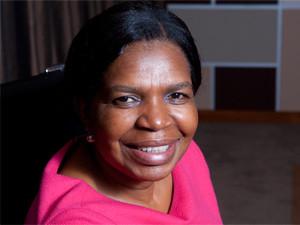
After several years of delays, the Department of Communications yesterday finally demonstrated digital terrestrial television in Motswedimosa, a community outside Kimberley.
The launch, in the Northern Cape, marks the latest milestone in SA's march towards digital terrestrial television (DTT) migration. The journey towards moving away from analogue started about six years ago, when SA decided to migrate to digital using the European DVB-T standard.
SA, which has since elected to move using the upgraded T2 version, aims to launch digital television commercially in December, and will award contracts for the manufacture of set-top boxes - needed to convert digital for viewing on analogue sets - by month-end, with delivery expected about a month later.
December marks the start of the dual-illumination period in which both analogue and digital signals will be available. Sentech has covered 61% of SA with DTT signal, and is on track to reach 88% by December, while the remaining 12% will be covered by satellite.
"The road to digital migration has been a long and arduous one," said communications minister Dina Pule. "However, the end is in sight."
Tough task
Pule said yesterday: "We have decided to showcase our proof of concept launch on DTT in a province that is hosting the Square Kilometre Array territory. This area presents unique challenges in the roll-out of DTT."
The Northern Cape is home to 30 communities that either never had broadcasting coverage or had poor and unreliable coverage. Currently, Sentech has covered 30% of the province with DTT, and aims to complete roll-out by October 2013.
"We've decided to showcase our proof of concept launch on DTT in an area where it will be particularly difficult," said Pule. She added that digital will revolutionise the broadcast industry.
Three areas in the Northern Cape were identified by the department for the demonstration based on the type of technology accessible in the area. The township of Motswedimosa, near Kimberley, will receive DTT signals, while Carnavon and Williston, located around the SKA project, will receive direct-to-home satellite signals.
Multiple benefits
Pule said about 800 jobs will be created in the manufacturing industry to produce decoders. In addition, around 20 000 youth will be trained to install and maintain decoders. "Ultimately, we trust that up to 6 000 youth will be entrepreneurial and run their businesses."
Around 4 000 call centre operators will be employed to deal with queries relating to decoders, and the South African Post Office will have to employ an additional 500 staff to assist with the distribution of the boxes, said Pule.
Launching digital TV will also free up space to introduce more television channels, and the content industry has the ability to create more than 10 000 jobs, she noted. The department aims to create at least 24 000 direct and indirect job opportunities within 12 months of the roll-out of digital migration.
Some of the benefits of digital broadcasting include better picture quality and enhanced voice clarity. The government is using the migration process to give a boost to the local economy, said Pule.
Long road
Television was first turned on in SA in 1976, making the country only one of two on the continent to broadcast in colour at the time.
"Television has changed dramatically from those first grainy images that graced our screens. Television today is a convergence of computers, the Internet and television. The television of the future will be an interactive tool that will revolutionise the way we communicate and interact with each other," said Pule.
In 2006, Cabinet decided to implement digital TV, based on the widely-used European DVB-T standard.
The next year, former minister Ivy Matsepe-Casaburri set November 2008 for switch-on, with analogue switch-off set for November 2011. In 2008, Cabinet approved the Broadcasting Digital Migration Policy, which set into motion the Migration Plan - a policy and framework within which digital migration should take place in the country.
In November 2008, local broadcasters started piloting digital TV, using DVB-T. Sentech started rolling out transmitters, and set-top box manufacturers geared up to make at least 10 million decoders for the local market, spending at least R700 million in the process.
Two years ago, the process was derailed when former minister Siphiwe Nyanda pondered using the Brazilian version of the Japanese ISDB-T standard. Then, in January last year, former communications minister Roy Padayachie said SA would move to digital TV using the upgraded European DVB-T2 standard, a significant milestone.
"Today, as we look back on the past five years and all that has been accomplished, we have much to celebrate. SA is one of the few countries in the world that will be utilising DVB-T2 technologies," said Pule.
SA has set December 2013 to complete the digital migration process, while the International Telecommunications Union deadline of the middle of 2015 will allow the country to take care of any unforeseen hiccups in the process, Pule concluded.
Share